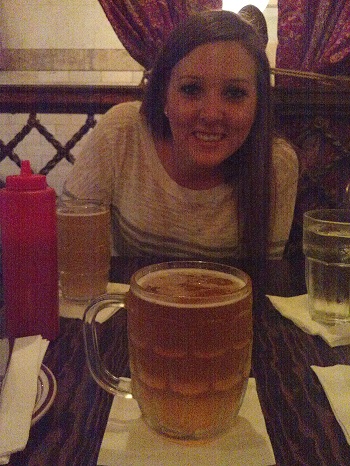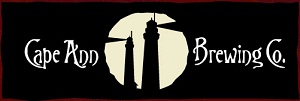Flight Of The Bumble Beer

Brewery and Country of Origin: Cape Ann Brewing Company of 11 Rogers Street, Gloucester, MA, 01930, USA
Date Reviewed: 7-19-13
This is a restaurant exclusive pilsner brewed with real honey. So at this point, you're probably expecting us to go on about honey, or bees, or whatever. And you'd be right. If you're one of our more regular readers, you'd know that we reviewed a honey infused beer last September. It was then, when we talked about our old friend Winnie The Pooh. But we didn't talk about where honey comes from. And because this beer is made for a place called The Beehive in Boston's South End, let's get on with the source. Beehives are the habitat for honeybee colonies. They can occur both naturally and artificially, for the purposes of commercial honey production, pollination, or other things. Natural hives are built in a range of places, from tree branches and trunks, to the corners of houses and buildings, which can cause problems for those who live and work inside them. They are usually between three and fifteen feet above the ground, can be as big as 100 liters in volume, and usually have entrances facing the Equator. Artificial hives have existed well before 2400 BC for the purposes of extracting honey. The earliest human made hive structures were simple and made out of natural materials including clay. Today, there are many commercially attractive hives which exist all over the globe. The most common is the Langstroth hive, which is used by 75% of the world's beekeepers. This is the traditional box shaped hive which contain rectangular frames used by bees as a structure for honeycombs. Honeycomb is a wax structure which houses both bee larvae and the honey which feeds them. Wasps create these hexagonal structures out of a paper like substance. Because honeycomb is energy intensive to construct (about 7 kg of honey to make 1 kg of comb), it makes economic sense for beekeepers to extract honey straight from the comb, and reuse it in the hive, which is why removable frames are used. Each box usually contains ten frames, and hives are made up of three or four boxes, each of which are used by different kinds of honey bees and serve different purposes. Honey is created by bees through a rather unappealing process of regurgitation and digestion of saccharides, which are a basic type of carbohydrate found in a flower's nectar. The bees regurgitate these carbs several times until they are partially digested, and then the evaporation of water and an enzymatic process takes place. The bees speed up the evaporation process by flapping their wings in unison to create a draft within the hive. And like beer, unfinished honey also contains small amounts of yeast, which would cause the sugars in the nectar to ferment. After evaporation, the bees seal up the honeycomb structure and store the honey as food.
Date Sampled: 7-10-13 At: The Beehive, 541 Tremont Street, Boston, MA 02116, USA
Beer Style: German Style American Pilsner
Alcohol by Volume: 5.30%
Serving Type: Keg, 20 oz Mug Glass
Rating: 2.94
 Beehive Honey Brew
Beehive Honey Brew




